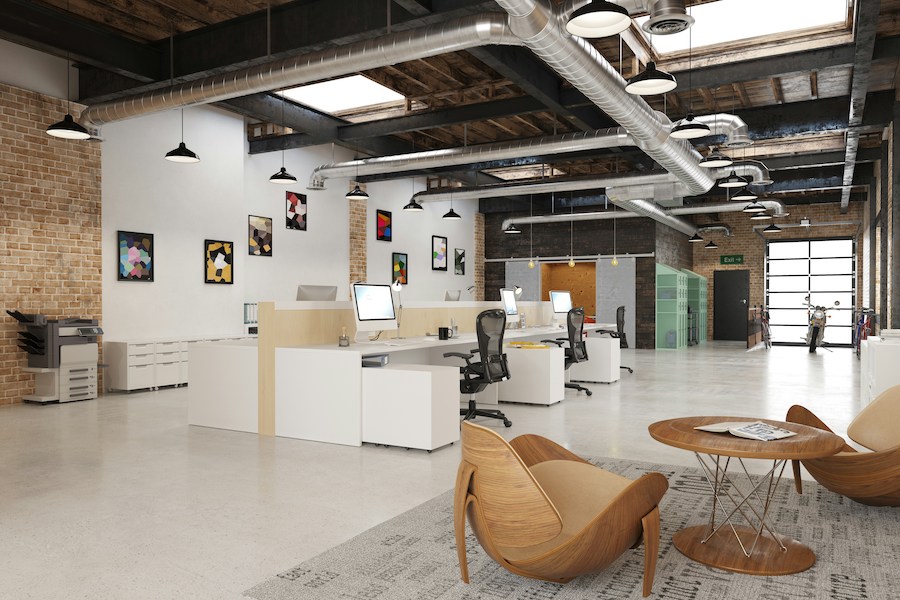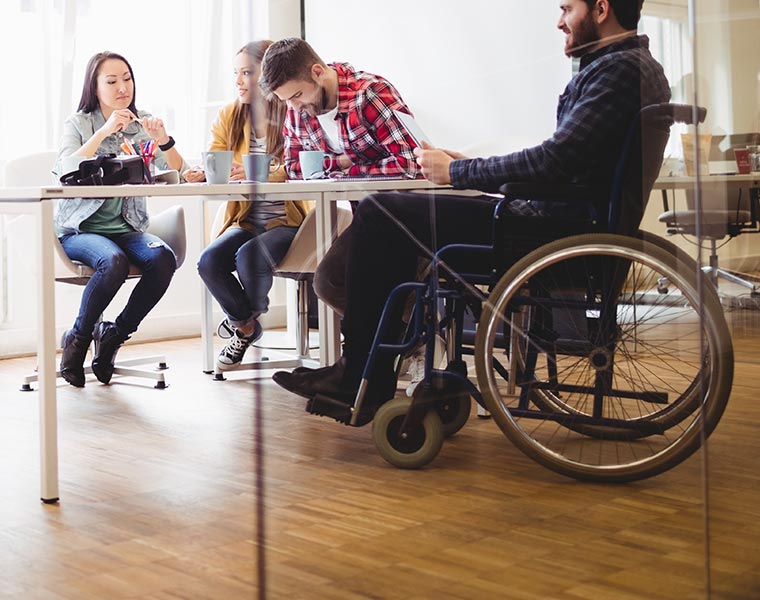In today’s diverse workplace, creating an environment where all employees can thrive is not just good practice, it’s also essential for business success. This is especially true as we move through what could be considered a ‘back to the office’ era.
With approximately 1.5 million adults in the UK living with ADHD (Attention Deficit Hyperactivity Disorder), it’s more important than ever to consider neurodiversity in office fit out planning.
Several recent studies show that when properly supported, employees with ADHD can bring exceptional creativity, problem-solving abilities, and hyperfocus to their roles.
In this blog post, we explore how strategic office fit out decisions can transform your workspace into an ADHD-friendly environment that enhances productivity and wellbeing for all staff.
Understanding ADHD in the workplace
ADHD affects approximately 4% of the adult UK workforce, with diagnosis rates increasing by 20% in the past five years.
Typically, this neurodevelopmental condition impacts attention regulation, day-to-day functioning and impulse control. In workplace settings, employees with ADHD may experience challenges with:
- Maintaining focus in distracting environments (visual, audio, etc.)
- Transitioning between tasks or environments (i.e. flexible or activity-based work)
- Managing time and deadlines
- Organising workspaces and information
- Filtering sensory input like noise, light, and movement
Despite these challenges, employees with ADHD bring many strengths to the table, including heightened creativity, problem-solving skills, and intense focus on engaging tasks.
In fact, 67% of employers who actively supported neurodiverse employees reported increased innovation and creativity within their teams. This was demonstrated as part of a 2023 UK workplace survey published by the CIPD (Chartered Institute of Personnel and Development).
The importance of strategic office design
CIPD research also shows that UK businesses lose approximately £1.4 billion annually due to neurodiversity-related productivity issues. There are the kinds of issues that could be addressed through thoughtful, neurodiversity-friendly workspace design.
So, investing in an ADHD-friendly office fit out isn’t just about compliance—it makes critical business sense.
Stats show that companies with neurodiversity-inclusive approaches experience:
- 30% reduction in absenteeism
- 25% increase in productivity among neurodiverse staff
- 20% lower staff churn (i.e. increased retention)
- 45% boost in workplace satisfaction across all employees
The right office fit out can transform these statistics into tangible business benefits, creating an environment where neurodiverse talent can flourish and feel a sense of inclusive belonging.
That’s why it’s essential to support staff mental wellbeing with the same level of commitment as you nurture employee physical health and fitness routines.
Key office fit out considerations for supporting ADHD
A thoughtfully planned office fit out that considers the needs of employees with ADHD creates advantages that extend to all staff members. The principles of good acoustic design, appropriate lighting, flexible workspace options, and sensory considerations benefit everyone’s cognitive functioning and wellbeing.
Acoustic solutions
Sound control should be a priority in any ADHD-inclusive office fit out scheme. According to UK workplace studies, employees with ADHD report noise distraction as their number one productivity barrier, with 78% agreeing that noise is a daily challenge.
Our experts recommend:
- Installing acoustic ceiling and wall panels to absorb excess noise
- Creating designated quiet zones using acoustic partitioning systems
- Using carpeting and soft furnishings as part of the interior design decor to reduce echo and noise travel
- Including acoustic pods for focused work or private calls
- Incorporating sound masking technology to reduce distracting conversations
Read more: The ABCs of office acoustics >>
Lighting design
A study by Motionspot and OnePoll found that 31% of neurodivergent respondents reported sensory overload as a significant challenge in the workplace. Over 40% of neurodivergent respondents identified as having ADHD suggested that lighting is a key contributing factor in sensory experiences.
Fluorescent lighting found in traditional office fit outs, with flickering or harsh illumination, is renowned for causing physical issues like eye strain and headaches. However, it can also trigger concentration struggles in neurodiverse space users.
Our experts recommend:
- Prioritising natural light in your office fit out and space configuration
- Installing adjustable LED lighting with dimmable options
- Providing personal desk lamps, allowing personal control
- Considering circadian lighting systems that adjust throughout the day
- Eliminating fluorescent lighting for other alternatives, where possible
Read more: Why mood lighting isn’t just for hospitality and the home >>
Flexible workspace zoning
The traditional open-plan office can be challenging for many employees with ADHD. A flexible, zoned approach to office fit out provides choices that accommodate different working styles and concentration needs.
Our experts recommend:
- Creating distinct work zones for different activities (collaboration, focused work, casual meetings, etc)
- Installing movable partitions that allow space reconfiguration as needed
- Designing quiet areas with enhanced acoustic properties
- Providing bookable focus pods for uninterrupted work, using room booking technology to help manage the flow of people
- Establishing clear visual boundaries between zones using colour, flooring changes, or physical dividers
Read more: Zoning without walls: space division in office fit out >>
Sensory considerations
Sensory overload is a common challenge for those with ADHD. A thoughtful office fit out can incorporate elements to help manage this.
Our experts recommend:
- Select furniture with variety in texture but not too many clashing prints and patterns (i.e. ‘visual noise’)
- Using colour psychology strategically, focusing on calming blues and greens in focus areas and energising shades like yellow and orange in collaborative spaces
- Minimise visual clutter through intentional design and plenty of storage
- Consider air quality and temperature control systems that maintain optimal conditions
- Incorporate biophilic elements like plants and natural materials to help reduce stress
Movement opportunities
Physical movement is particularly beneficial for those with ADHD as it enhances focus and supports mood regulation. Your office fit out and furniture should encourage more movement throughout the workday to promote less sedentary lifestyles.
Our experts recommend:
- Installing height-adjustable desks to allow position changes and standing work
- Creating walking meeting routes or spaces for active meetings
- Incorporating informal standing meeting areas
- Designing wider corridors that allow for more fluid movement
- Considering active seating options like wobble stools or balance balls
Read more: How employers can promote less sedentary lifestyles >>
ADHD-Supportive technology integration
Technology plays a crucial role in creating adaptive environments. Workplace tech helps employers monitor how a space is currently being used and therefore how it could be improved, e.g. made more inclusive.
Technology can also play a significant role in ensuring that people with ADHD can use and enjoy the space with the same confidence and comfort as their peers. Tech integrations can help foster familiar, navigable environments that reduce cognitive load for employees with ADHD.
Our experts recommend:
- Installing room booking systems that clearly display availability
- Providing noise-cancelling headphone stations or silent pods
- Incorporating wayfinding technology and clear signage
- Installing automated environmental controls for lighting and temperature
- Considering touch-screen information points for easy space navigation
By partnering with experienced office fit out specialists who understand these considerations, organisations can create workplaces where all employees, including those with ADHD, can perform at their best.
Looking to create a more inclusive workspace through your next office fit out project? Get in touch with our team of commercial design experts today for guidance.








